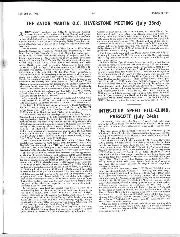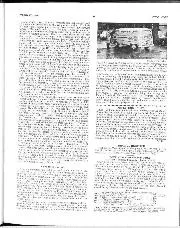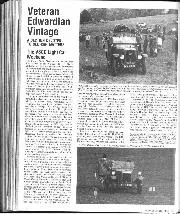A 1,320 H.P. AIR YACHT THE SPECIALLY-BUILT SUPERMAR1NE MONOPLANE
IN the U.S.A., the flying boat and the amphibian are fairly popular amongst private owners, and during recent years one or two remarkably elaborate “air yachts” have been built to the requirements of wealthy American sportsmen. Nothing so far conceived however, can approach the new monoplane flying boat which has been designed and produced by the Supermarine Aviation Works Ltd., to the special order of the Hon. Ernest Guinness.
Apart from the incorporation of the most up-to-date principles and ideas in its design, this craft is interesting in being the first flying yacht to be built in England to the order of a private owner ; it is also the first multi-engined monoplane produced by the Supermarine Company.
The material used in its construction is, for the most part, duraluinin ; the main members of the hull superstructure, the wings and the controlling surfaces are all of this metal, and stainless steel is used largely for the hundred and one small fittings and parts under heavy stress. The wing covering, however, is of fabric. As can be seen from the accompanying photographs, the wing (which has a span of 92 feet) is mounted high on the hull, on struts in N-shaped formation, while lift-struts run from the wing to the extremities of the stub-floats or stabilizers which are placed amidships. The three Armstrong-Siddeley “Jaguar ” engines are mounted on the wing and are fitted with Town9ild exhaust-collecter rings, which in conjunction with the streamline fairing, give the installation a very neat appearance and reduce drag. The elevator and the
triple rudders are partially balanced, as is usual on a machine of such size.
The fuel and oil tanks are situated in the wing, and with a full load of petrol and a minimum crew, 2,000 miles can be covered with the machine without re-fuelling ; emergency petrol tanks are carried in the stub-floats. The latter, by the way, serve as a convenient platform for passengers coming aboard from a tender, and when at anchor the space is available for ordinary deck use. The quarters within the hull are extraordinarily replete and well-equipped. In the bows there is an open cockpit for the use of passengers and behind this are situated the pilots’, whicli are fitted with dual-control. Aft of these are two more
cockpits, again, for the use of passengers. Down below, the accommodation is spacious and luxurious, there being a saloon and berths, provided with wardrobes, dressing tables, sideboards, and in fact, everything which is usual in yacht furnishing practice.
A neat little galley, with oil cooking apparatus is also included, and a wireless plant is carried which allows of transmitting and receiving messages when the craft is in flight or on the water. Due consideration has been given to the matter of lighting and an electric system is installed throughout, while a row of portholes on the port and starboard sides give a brightness to the interior, which is by no means common in plenty of cabin machines. The cabin is also fitted with a ventilating arrangement so that it is possible to keep the atmosphere at an even temperature.
All told, the weight of this remarkable aircraft is 10i tons, and with six passengers, a crew of three, and 600 lbs. of luggage she has a cruising speed of 100 m.p.h. and a top speed of 120-130 m.p.h.




